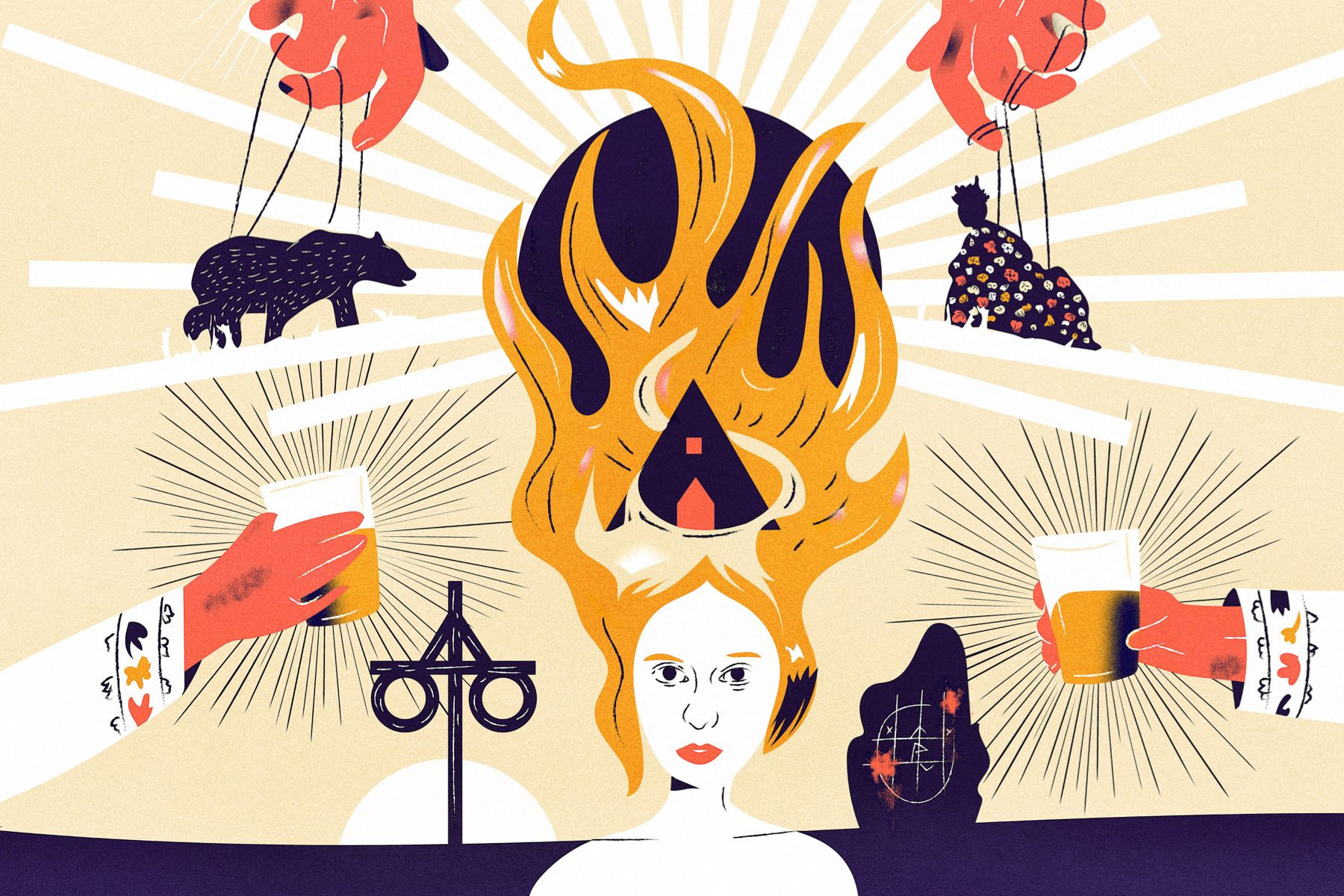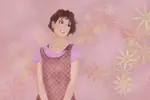“Midsommar” is a world drenched in light and pastels, where vibrant flowers crown one’s head, hypnotic melodies float across green pastures and lively women dance under the sun. It is a place where nighttime shadows never chase away the sunlight, where old age never claims a human soul and where everyone is loved and wanted.
Welcome to Hälsingland — Eden on Earth.
Dani Ardor (Florene Pugh) and her boyfriend, Christian (Jack Reynor), venture into this serene Swedish village at the invitation of friend and classmate Pelle (Vilhelm Blomgren), who proudly calls Hälsingland his home. Perfectly enough, Pelle says they have come just in time to celebrate the midsummer festival full of feasts, pageantry and merriment.
Upon arrival, the guests are greeted by an entire village dressed in white gowns that are intricately embroidered with runic symbols. Animals wander freely, wide smiles are abundant and a band plays gentle mountain tunes. What could be more welcoming … or more eerie?
“Midsommar” presents beauty in a way that allures audiences. When the village women dance around the maypole, viewers cannot help but to join Dani in grinning at the warmth that community revelry provides. Audiences want to live in this idyllic world and experience its mystic sacredness.
The film features two elderly villagers leaping from a clifftop and smashing against the rock below as the town watches and celebrates. This end-of-life ceremony is part of the ritual and religion of Hälsingland — nothing to worry about. Or so Dani is told.
“Midsommar” is Ari Aster’s second film, and it plays with the concept of horror by creating a story that is not terrifying because it is supernatural or grotesque in its violence, but unsettling because it is unnervingly close to reality.
Dani is reeling from the death of her parents and sister. Christian, mulling over how to end their relationship, offers little emotional support. Dani’s psychological state is so fragile that the mere mention of death sends her into a hyperventilating fit of panic. She is vulnerable, scared and alone, which makes her the perfect prey.
Dani begins to succumb to madness while navigating this funhouse gone awry. She is unable to tell which acts of violence are real and which are imagined because of the Hälsingland delicacies of hallucinogens and sedatives.
Just when it seems Dani is about to crumble, the village rushes to her aid. They practice communal emotion, sharing pain and joy, to prevent excessive emotional disturbance, which is the security blanket that Dani desperately needs. She is welcomed into this remote, bucolic family and becomes a part of their sacred rituals. She even hails as their May Queen.
The people of Hälsingland take a woman who is already vulnerable and bring her down further until she is standing on the edge of insanity. Then, as some sort of misshapen heroes, they rescue her from the degradation they wrought. This process is reminiscent of tactics used by charismatic cult leaders to draw in followers.
Despite the hell of Hälsingland, with murders and rituals so gruesome that Dante and Poe would squirm, it is also an Eden. First, Dani is intoxicated by the village’s beauty, then she is repulsed by its violence, and, finally, she’s comforted by the paradox of its sinister sublimity.
The final scene of the film signals a newfound strength in Dani — a confidence that she acquires during her stay in the Swedish mountains. For Dani’s fellow travelers, Eden quickly deteriorates into Hell. But for Dani, Hälsingland becomes her source of healing.
In Aster’s debut film, “Hereditary,” he uses the same approach to weave a horror story that transcends jump scares and ghouls. After the death of her mother, Annie Graham (Toni Collette) begins to uncover why tragedies worse than death stalk each new generation of the family.
Aster’s method of manipulating the ordinary into nightmarish scenes is poignant and effective in both films.
Aster uses the element of light to progress the eerie plots of both “Hereditary” and “Midsommar.” Historically, horror films have been shrouded in darkness. Creatures only attack at night, figures lurk in shadowed corners and ghosts lure humans to unlit attics and basements.
In “Midsommar,” however, audiences are practically blinded by brightness. Two and a half hours of staring at a screen bathed in white and pastel light is almost physically painful.
Light is typically an illuminating force, but Aster uses it to obscure. In the remote Swedish village, the night only lasts a few hours, and total darkness never occurs. All is exposed in the world of “Midsommar.”
Upon entering the village, Dani and her friends feel safe as they bask in the warm summer days, and audiences feel more grounded without the on-edge feeling that darkness creates in the cinema.
Although Aster’s “Hereditary” is true to the typical horror trope of a dark, old haunted house, the figures lurking in the dark are not mirages created by shadows — they are real, dangerous and powerful entities. The Grahams think that those beings disappear when they turn on the lights — but in Aster’s films, the light does not drive away or destroy. It merely covers, blinds and brings a false sense of security, making the Grahams all the more vulnerable and audiences all the more horrified as their inner demons manifest when the day is bright.
Aster takes a well-recognized element of horror and wields it as a weapon of obscenity that is not constructed of the unbelievable, but of the plausible. His characters have such normal, mundane lives in the beginnings of “Hereditary” and “Midsommar” that audiences wonder if the films were incorrectly marketed as horror. Then, slowly, the film uses light to draw the viewers in and to lead the characters into their own personal horror stories.
In most horror movies, audiences can clearly distinguish the line between themselves and the events on screen. Excessive gore and predictable plotlines make it clear that the film is a piece of entertainment. Aster, however, deliberately blurs that line. Audiences find themselves uncomfortably identifying with how Dani’s grief draws her into a pagan cult and how Annie’s personal tragedy and desperation soon wreak havoc on her family.
Both films contain elements of supernatural and magical worlds, but they are not fantastical. They can be rationalized as the result of drugs or the hallucinations of someone devastated by catastrophe. This realization quickly turns what is scary, fun and impossible into something horrifyingly realistic.
















